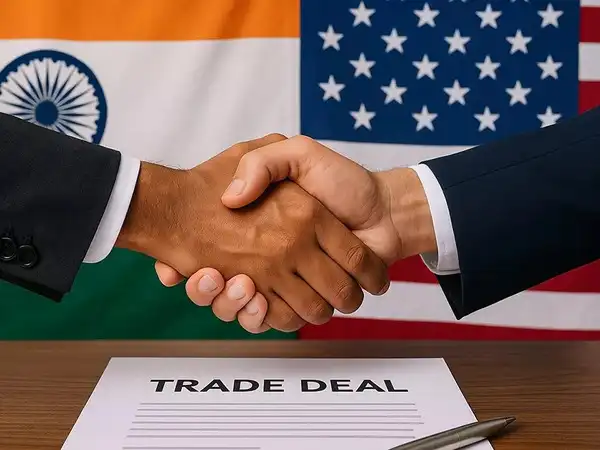Exploring the India-US Trade Deal: Key Focus on Energy, Agriculture, and Tariffs

Trade negotiations between India and the United States are gaining momentum, with President Donald Trump indicating that a significant agreement is on the horizon. During a recent press conference at the White House, Trump expressed optimism about a potential deal, suggesting it could open up new avenues for trade between the two nations. This development comes as both countries aim to enhance their economic partnership, particularly in sectors such as energy, agriculture, and defense.
Potential Changes in Tariffs and Trade Dynamics
The anticipated trade agreement between India and the US could lead to a substantial transformation in their trade relationship. Analysts suggest that the deal may lower tariffs, making American products more competitive in the Indian market. This is particularly relevant for sectors like energy, agriculture, defense, and aviation, where India’s tariffs are generally higher than those in the US. The Finance Ministry’s Monthly Economic Review indicates that the Bilateral Trade Agreement (BTA) could favor American exporters, especially as discussions around digital trade, market access, customs procedures, and technical standards progress.
In April 2025, the US had implemented a 26% reciprocal tariff on Indian goods, but this was suspended for 90 days starting April 10, allowing a 10% basic duty to remain in place. With bilateral discussions accelerating, there is hope for a provisional agreement to be reached before July 9. India is particularly focused on securing a complete exemption from retaliatory tariffs. The trade volume between India and the US reached $131.84 billion in FY25, positioning India as the US’s primary trading partner. While US imports to India may rise under the BTA, experts caution that Indian exports could see limited benefits, as many already enjoy duty-free access to the US market.
Opportunities in Energy and Agriculture
India’s growing energy needs, especially for liquefied natural gas (LNG), present a significant opportunity for collaboration with US suppliers. Analysts from CRISIL highlight that LNG offers advantages in price stability and is more suitable for long-term contracts compared to crude oil. As India seeks to diversify its energy sources, partnerships with US suppliers could play a crucial role in meeting its demands.
In the agricultural sector, imports from the US may increase, particularly for products like walnuts, pistachios, and cranberries. However, broader access to the Indian market for US agricultural products remains a contentious issue. The potential for increased agricultural trade underscores the importance of the BTA in shaping future economic relations between the two countries.
Defense Sector Collaborations and Economic Growth
The defense sector is poised for significant growth under the proposed trade agreement. Despite India’s commitment to enhancing domestic defense production, it continues to be a major importer of arms. The US, as the world’s leading arms exporter, has strengthened its defense collaboration with India, notably through initiatives like the INDUS-X program launched in 2023. This partnership is expected to bolster India’s defense capabilities while fostering economic growth.
While India’s trade surplus may face challenges, there is optimism about growth in labor-intensive industries such as textiles, gems, and jewelry, as well as high-value sectors like smartphones and pharmaceuticals. The ongoing negotiations for the BTA encompass multiple sectors, with both nations viewing it as a crucial step toward a more robust economic partnership.
Future Prospects and Broader Trade Agreements
In February, Prime Minister Narendra Modi and President Trump agreed to finalize the initial phase of the bilateral trade deal by autumn 2025, with a target to increase trade to $500 billion by 2030, up from approximately $191 billion in 2024. India is also making strides in its negotiations with the European Union for a free trade agreement later this year and has recently concluded discussions for a free trade agreement with the United Kingdom. These initiatives aim to diversify India’s trade partnerships in anticipation of potential shifts in US policy under the Trump administration.
As negotiations continue, experts emphasize that the onus is now on the US to engage constructively. Ram Singh, who leads the Indian Institute of Foreign Trade, remarked that India is not interested in a win-lose trade partnership. Recent data shows that India’s exports to the US increased to $17.25 billion during April-May, compared to $14.17 billion in the previous year, indicating that the US tariff increases had minimal impact on trade dynamics.
Observer Voice is the one stop site for National, International news, Sports, Editor’s Choice, Art/culture contents, Quotes and much more. We also cover historical contents. Historical contents includes World History, Indian History, and what happened today. The website also covers Entertainment across the India and World.
Follow Us on Twitter, Instagram, Facebook, & LinkedIn

